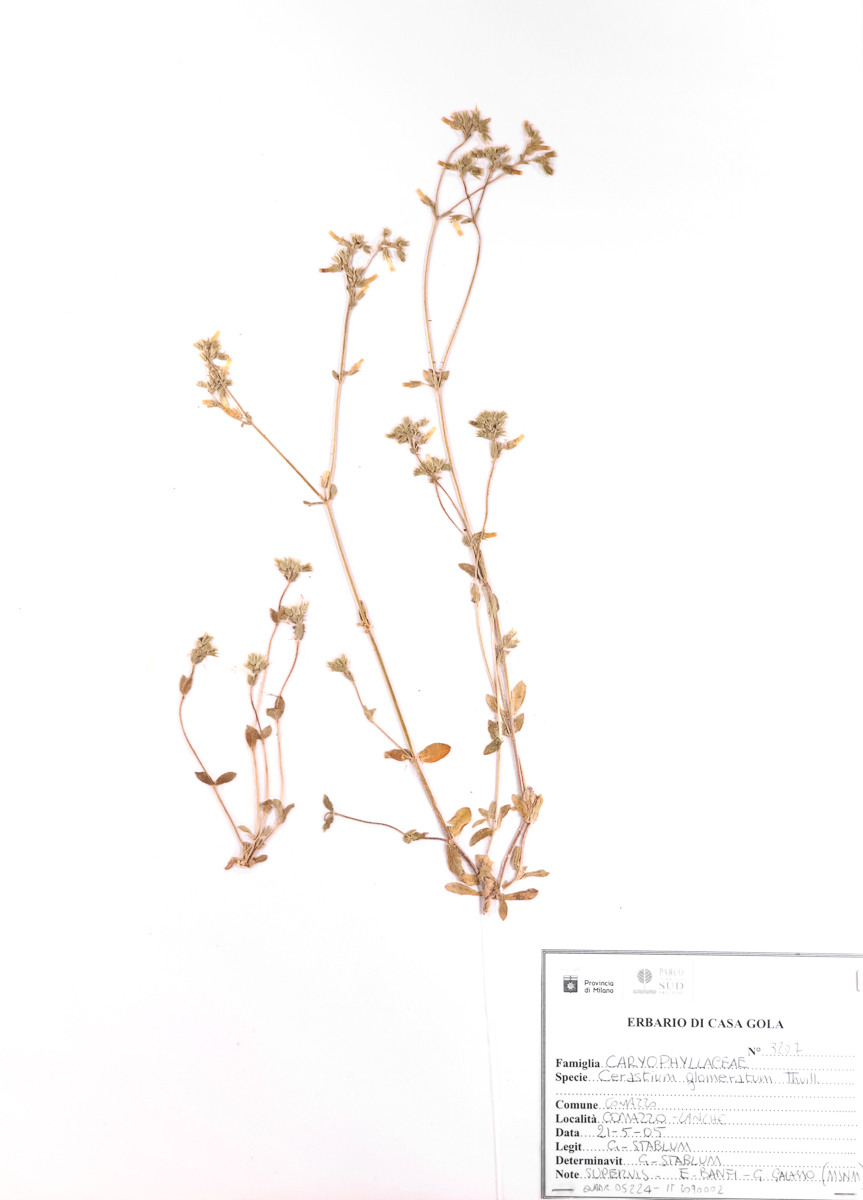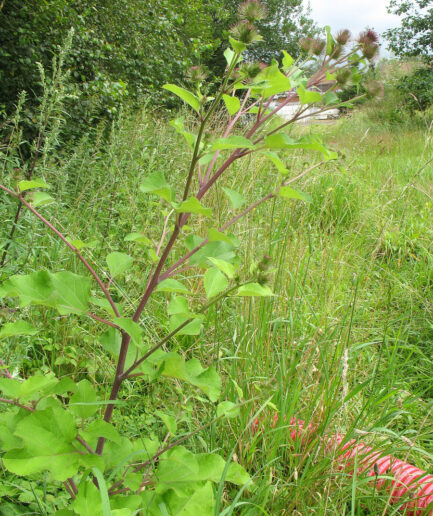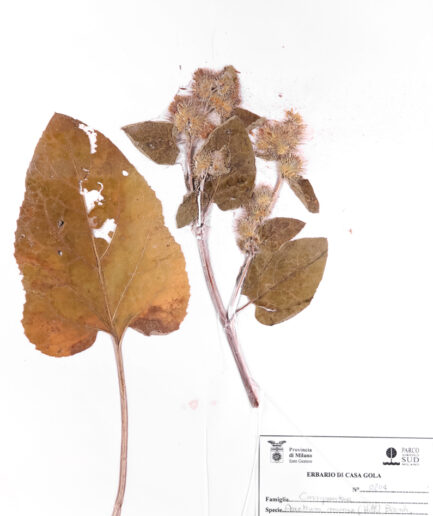Sticky mouse-ear
Scientific Name: Cerastium glomeratum Thuill.
Family: Caryophyllaceae
MORPHOLOGY
Habit and Size: Annual herbaceous plant, without sterile shoots, 5-25 cm tall, covered with star-shaped and glandular hairs, especially in the upper part.
Stem: Erect and dichotomous stems, at the fork of which grows a small solitary inflorescence with a short stalk, positioned between 2 opposite sessile leaves.
Leaves: Generally oval or sub-spatulate-lanceolate, acute, opposite, and sessile leaves, not exceeding 1.5 cm in length.
Flowers: Clustered in compact repeatedly dichotomous heads, with bracteal leaves, provided with long hairy fringes. The flowers with white, incised, glabrous petals, generally ciliated at the base, equaling or exceeding the sepals. Calyx with free and persistent sepals, membranous at the margin, the outer ones topped by a tuft of simple hairs. Fruit-bearing pedicels ± equal to the calyx. Blooms throughout the year.
Fruits and Seeds: Dehiscent capsules of 7-8 mm.
DISTRIBUTION AND HABITAT
Present throughout Italy in uncultivated fields, in vineyards, weed in crops between 0 and 1,400 m.
Photo: Under the free license of Saxifraga and Ed Stikvoort, Rutger Barendse.





















